In short:
- Hurricane Ian might cause a 4-7 ft storm surge in South Carolina on Friday.
- Europe could face mobile network blackouts this winter.
- The cost of growing food in the US is set to rise by the most ever in 2022.
National Preparedness Month Challenge
Each Tuesday and Friday throughout September, the news roundups featured a section of TP’s beginner’s checklist and introduced a conversation topic or a challenge to work on. Today is the last day of the challenge. You can read the introductory post and the previous topic here.
Today’s topic: Recap & where to go from here?
You’re no longer a beginner at this point. Well done! Now you can take a breather. 🥳🥳🥳
How you progress from here starts to greatly depend on your goals and circumstances. Roughly speaking, people tend to:
- Increase the amount of time they can survive in their home without the help or grid — which usually means increasing supplies (eg. having multiple months or years of food and water) and improving the home so it doesn’t need the grid.
- Get into more advanced gear, such as multiple types of firearms.
- Explore ways to create their own food through farming or livestock, even if it’s a small indoor garden or meat rabbits.
- Explore ways to capture their own water via rain collection systems, etc.
- Buy or build a bug out vehicle.
- Be more intentional about cooking at home, repairing or mending products, composting, and other general homesteading techniques.
- Build up a resource library of survival books or other info not dependent on the internet.
- Continue improving their physical fitness and personal finances.
- Hedge against economic risks with precious metals.
- Build or buy a bug out location, such as a cabin in the woods a reasonable drive away from home.
- Prepare their home for hurricanes, wildfires, or other emergency scenarios.
- Continue learning advanced skills, such as Austere First Aid or metalworking.
Be sure to participate in communities like The Prepared’s blog, forum, or Discord. We also like the /preppers subreddit. Prepping is a never-ending lifestyle, so try to check in with the community from time to time.
For the last challenge:
1. Ask yourself: What did you learn this month? Are you better prepared? Tell us how focusing some of your attention and time on preparing is helping you feel better about the future.
2. Join us on Discord anytime after 12 pm ET in the #national-preperadeness-month channel for the discussion. If you’re not on Discord, feel free to comment below.
Big announcement: Friday, Oct 7 @ 6 pm PT, we will kick off our monthly Prepper Chat Nights on Discord! On the 1st Friday of the month, same time, tune in to the #preppers-chat-night channel for an audio/video call and talk about prepping and survival for an hour or two.
Economy, supply chain, energy
The White House kicked off the student loan debt forgiveness process. The Department of Education sent updates on the process via email before the window to apply opens next month.
US lumber prices have dropped by more than 60% this year and might keep falling. Higher interest rates and inflation are slowing demand for single-family homes—and lumber. This might be the time to finally go ahead with those DYI and retrofit projects!
Europe is bracing for mobile network blackouts. Many European countries lack sufficient backup systems to handle widespread power cuts, raising the possibility of mobile phone outages. EU countries are trying to make sure communications don’t stop if power cuts drain batteries on thousands of cellular antennas. The article has more details on how countries are preparing for this eventuality.
World Bank slashed the economic outlook for Asia, citing China’s “zero-COVID” policy as a drag on regional growth. The region’s growth is also at risk from aggressive interest rate increases by central banks to curb soaring inflation. China is the world’s second-largest economy. And Russian economy will “die by winter” because of the “catastrophic consequences” of the military mobilization, according to a top Russian economist (thread):
🇷🇺 An action by Vladimir Putin could be the catalyst that plunges Russia’s economy into real catastrophe.
A top Russian economist warns it will “die by winter.” 🧵https://t.co/X3exMBwrsz pic.twitter.com/QkfL7tRxN3
— FORTUNE (@FortuneMagazine) September 28, 2022
Russian farmers are being drafted into the military, putting the 2023 crop at risk. Russia is the world’s largest wheat exporter. The autumn season is a busy one for farmers as they sow winter wheat and harvest soybeans and sunflower seeds. Winter grain sowing has already been significantly delayed by rains.
South Korea faces a kimchi shortage due to climate change. If climate change continues at its current pace, by the 2090s, the yield for Korean highland cabbage will drop by 99%. Making kimchi is an easy and healthy way to preserve cold-hardy vegetables for the rest of the winter. Here’s how to.
Typhoon Noru and La Niña could disrupt Vietnam’s coffee harvest and increase the risks to global supply. Benchmark robusta prices have already surged in recent months. Vietnam is the world’s second-biggest coffee producer and top robusta supplier.
The cost of growing food in the US is set to rise by the most ever in 2022. Production costs are estimated to rise by $66.2 billion or 18% in 2022. The biggest leaps in costs come from fertilizer and feed for raising animals. As the world is turning to the US for food supplies, the rise in US farming costs is likely going to keep inflation and hunger up.
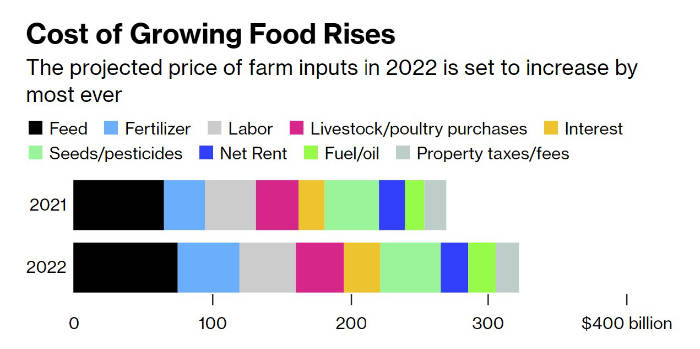
Hurricane Ian threatens to make food inflation worse as it affects America’s biggest fertilizer plants. Fertilizer prices have declined since spring but are still “considerably higher” than last year. Fertilizer prices are expected to remain high in 2023. The US has just made available $500 million in grants to increase American-made fertilizer production.
Ugandan farmers are using maggots as a solution to the fertilizer shortage. The organic process is straightforward. Maggots (larvae of the black soldier fly) are placed in large vats or tubs full of fermented food waste (fermentation softens the waste). In about a week, insects digest waste, enzymes break it down, and their poop becomes fertilizer.
Climate change, extreme weather
Tropical Storm Ian will restrengthen to a Cat 1 hurricane and likely hit Charleston, SC, early Friday. A Cat 1 hurricane might not be strong enough to prompt evacuations, but life-threatening storm surges, heavy rain, strong winds, floods, and flash floods are expected.
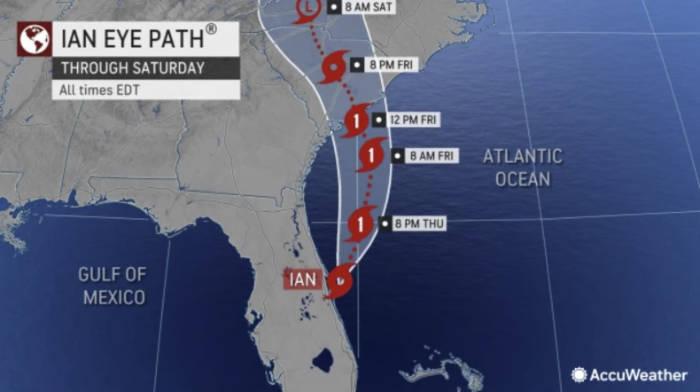
Click below for the latest key messages from the National Hurricane Center:
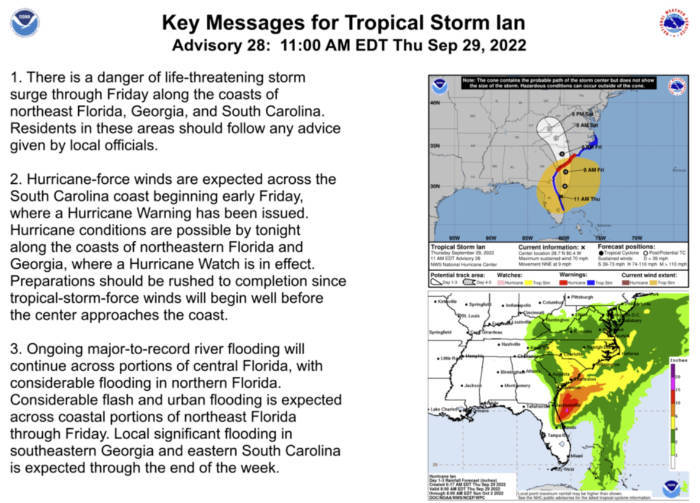
A 4-7 ft storm surge is expected in Charleston:
9/29 11am EDT: There is the danger of life-threatening storm surge from #Ian along the coasts of northeast FL, GA, SC, & the Neuse River, NC, where a storm surge warning is in effect. Residents should follow advice from local officials & check https://t.co/0BMJEA5Wz0 for updates. pic.twitter.com/h7h6ZevGhx
— NHC Storm Surge (@NHC_Surge) September 29, 2022
Strom surges and flood advisories should be taken seriously because around 90% of hurricane-related deaths are water-related, and about 50% are caused by storm surges.
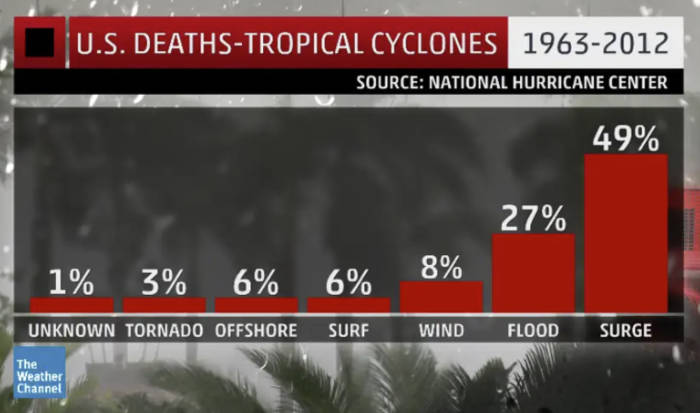
This is what the storm surge looked like in Ft Myers Beach:
Before the hurricane hits, beware of reverse storm surges: Before landfall, winds push water away from shallow areas and back into the ocean. The water then returns onshore with greater force, inundating coastal communities. It can be dangerous because people often go to bare or uncovered areas to take photos, grab shells, etc. However, the water can come back just as fast as it went out, and people are often caught off guard by it.
Here are a few pictures of the receding water at Venice. IMPORTANT NOTE: The water WILL come back. Please do not attempt to walk there or any other location with receding water. https://t.co/frMvkCrvBP
— NWS Tampa Bay (@NWSTampaBay) September 28, 2022
Other major death risks caused by hurricanes are carbon monoxide poisoning and electrocution. Other indirect fatalities include vehicle incidents, recovery/prep accidents, and heat-related issues. Most of the indirect deaths appeared to be among people 60 or older. Generators are a great prep, but for all that is good and sane, NEVER USE THEM INDOOR. Instead, put your running generator outside, ideally 20 ft from your house, with the exhaust directed away from buildings and windows. Here are more safety tips.
Be safe if the power goes out.
✔️ Use generators safely to prevent carbon monoxide (CO) poisoning.
✔️ Have a battery-powered or battery backup CO detector in your home.
✔️ Use flashlights rather than candles.
More safety tips: https://t.co/EFSiKl4MRz #PrepYourHealth #Ian pic.twitter.com/AuQlxBNzdP— CDC Environment (@CDCEnvironment) September 28, 2022
Ian knocked off power to all of Cuba, and more than 2 million customers in Florida are still without. Florida Power & Light warns that parts of their system will need to be rebuilt – not restored. And to be prepared for widespread, extended outages as they are assessing the damage.
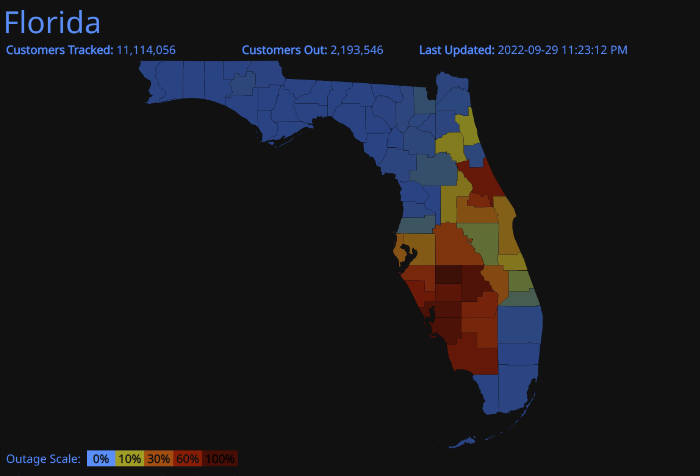
Here are first-hand accounts from people who ignored evacuation orders and bugged in instead. There are probably some learning lessons in there.
1,000-year rainfall, record-breaking surge: How climate change made Hurricane Ian more destructive (and what to expect in the future):
- Climate change increases the frequency of extreme rainfall. As temperatures warm, warm air can hold more moisture. More than 12 in of rain fell across a wide area from Port Charlotte to Orlando in just 12-24 hours.
- It makes storms stronger and pushes them to intensify faster. Ian’s max wind speed increased by 35 mph in less than three hours, going from a Cat 3 to an almost Cat 5. The likelihood of rapid intensification – a hurricane’s winds intensifying rapidly over a short period – is increasing as ocean temperatures rise. This gives hurricanes more fuel to strengthen.
- It raises the likelihood of higher storm surges. In Naples, water levels climbed 2 ft above record level early Wednesday afternoon before the gauge stopped working. A sea level rise of only a couple of inches can make a dramatic difference in how far inland a hurricane’s surge can travel.
When the power grid goes out, could solar and batteries power your home? Berkeley Lab explored how homes and commercial buildings can survive three-day power outages with only solar and batteries. Almost anywhere in the country, a modest solar plus battery system could power critical loads for days at a time. Providing backup cooling and heat can be a challenge but not insurmountable. Read the rest of the article for real-life examples and comparisons of how solar would have handled ten past disasters.
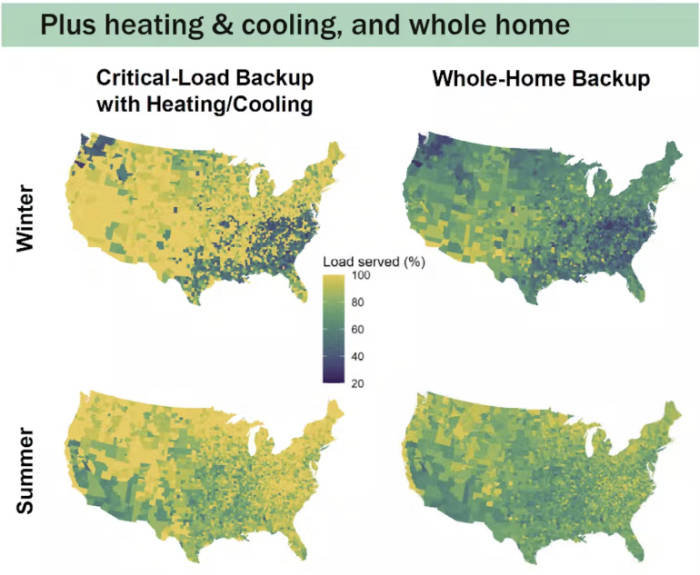
Putin, nuclear threats, and pipeline sabotage
Putin renewed threats of nuclear weapons and is going to formally annex four occupied Ukraine regions on Friday. Once officially incorporated into Russia, the four regions will be under Moscow’s nuclear umbrella and would give Putin an excuse to use nuclear defensively. The threat of nuclear is higher than months ago, but we’ll still try to keep a level head. Here is how the West has reacted:
US National Security Adviser Jake Sullivan said there would be “catastrophic consequences for Russia” if they crossed the line. The US is currently in private talks with Moscow. NATO also warned Russia of “severe consequences” in the case of a nuclear strike.
According to Politico, the US stepped up intel and surveillance in an effort to detect any signals that Putin has ordered the use of nuclear weapons in Ukraine. It could be harder to detect ‘small’, tactical nukes rather than bigger, strategic ones, but the US Strategic Command has not seen “[…] any evidence at this time that Russia will use nuclear weapons.” Intelligence agencies are confident that Russia would not risk an all-out nuclear war by launching a massive attack on Ukraine or NATO countries. Instead, they would use “micro-nukes” that “can focus on really small tactical targets. [And] don’t have lots of radiation.”
An international security expert explains and assesses what tactical nuclear weapons are, and why using them in Ukraine would not achieve any military goal.
NATO believes that a series of explosions and leaks at the Nord pipeline point to sabotage. The leaks had no immediate impact on energy supplies to the EU, but gas remained in the pipes, raising concerns about possible environmental harm. The pipeline operator said that the leak would likely stop Monday.
NATO said that “Any deliberate attack against Allies’ critical infrastructure would be met with a united and determined response.” NATO allies are stepping up security in the Baltic Sea. British defense sources suggested underwater drones might have laid the explosives weeks before the “premeditated” sabotage. The CIA warned about a possible attack on the Nord Stream pipeline weeks ago. The US points the finger at Russia.


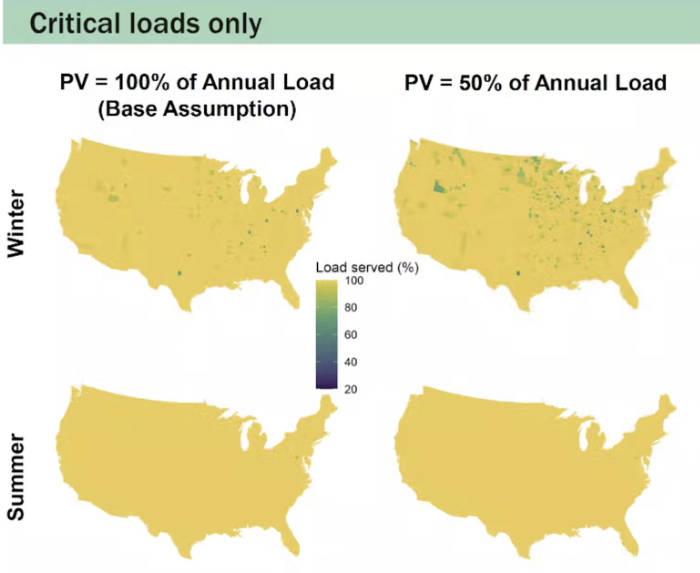
You are reporting the comment """ by on